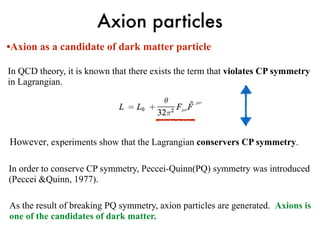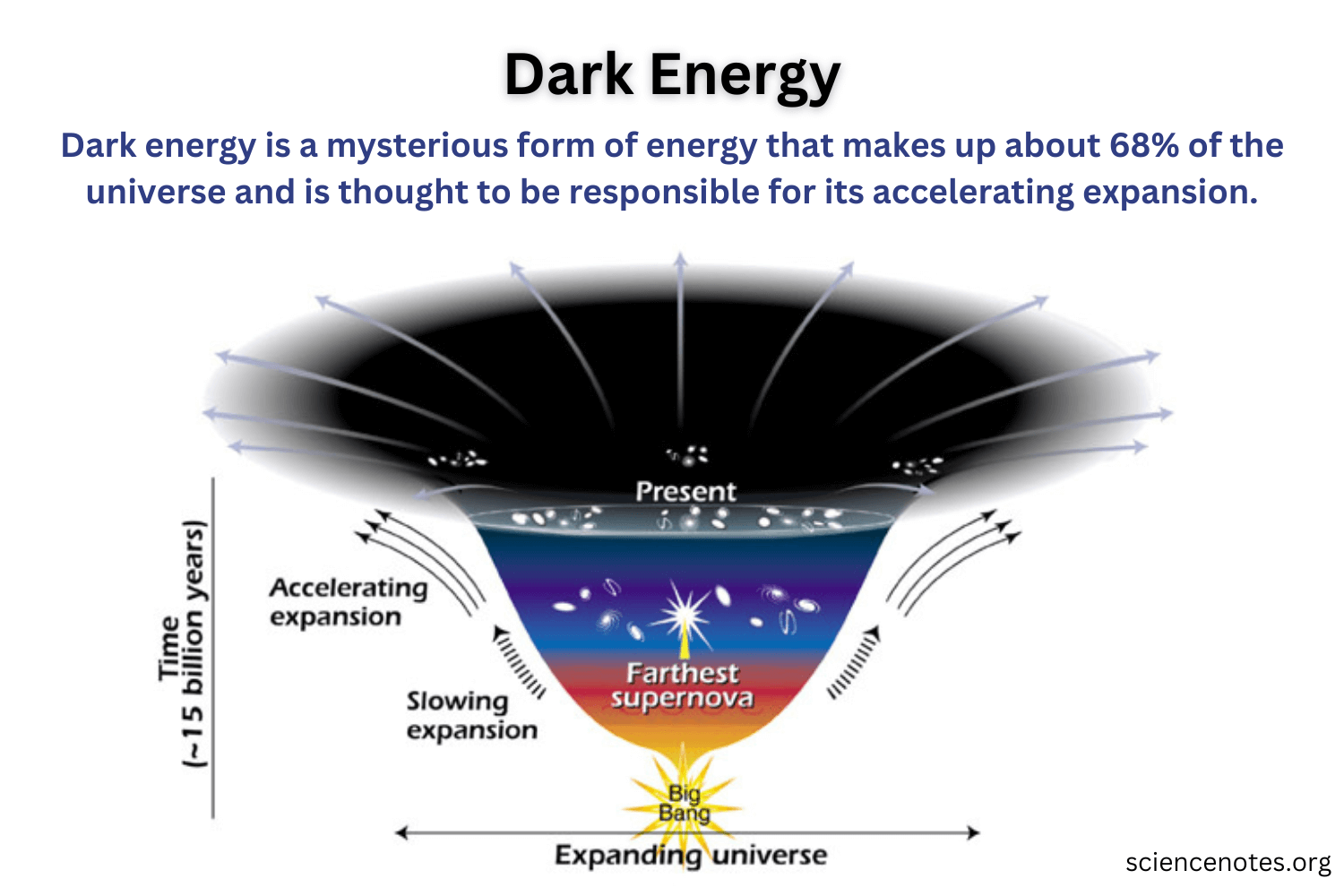In the search for understanding dark matter, axion particles emerge as a captivating frontier in particle physics. These hypothetical particles have long been theorized to provide answers to some of the most profound mysteries of cosmology, particularly the nature of the unseen mass that constitutes the universe’s fabric. Recent advancements in research have begun to unravel their connection to quasiparticles, offering novel pathways to detect these elusive entities. Scientists are optimistic that confirming the existence of axion particles could illuminate our understanding of the cosmos and its origins, bridging gaps in our knowledge of quantum materials. As researchers continue to investigate the role of axions in dark matter, the implications for both fundamental physics and potential technological innovations are staggering.
Recognized as pivotal components in the universe’s architecture, axion particles, or their simulated forms known as quasiparticles, play a critical role in advancing our grasp of dark matter. These enigmatic entities have sparked intense interest within the field of particle physics due to their potential to elucidate the complex nature of the cosmos. As experiments evolve, new techniques are being developed to harness the characteristics of quantum materials to probe the existence of these vital components. Understanding their dynamics not only promises to deepen our comprehension of cosmological phenomena but also paves the way for exciting applications in technology. The ongoing investigations into axion quasiparticles represent a leap forward in our quest to decode the universe’s foundational elements.
Understanding Axion Particles: The Dark Matter Connection
Axion particles have emerged as one of the most promising candidates in the quest to explain dark matter—a mysterious substance that comprises a significant part of the universe’s mass. These hypothetical particles were introduced to reconcile certain fundamental problems in particle physics, particularly those related to the strong force in quantum chromodynamics, the theory of strong interactions. Their unique characteristics make them a focus for researchers aiming to unveil the properties of dark matter, which until now remains undetectable by conventional means.
The significance of confirming the existence of axions extends beyond theoretical physics; it also holds potential implications for our understanding of cosmology. If axions do exist, they could fundamentally alter our perception of the universe’s composition and evolution. This exciting frontier of research not only tackles the enigma of dark matter but also pushes the boundaries of particle physics, inviting advancements in quantum materials and technology through innovative testing methods.
Quantum Materials and Their Role in Particle Physics
Quantum materials, like manganese bismuth telluride, play a crucial role in advancing our understanding of particle physics and the hunt for axions. These materials exhibit unique electronic and magnetic properties that are instrumental in studying quasiparticles. By leveraging the unique characteristics of quantum materials, researchers can create environments conducive to the generation and manipulation of axion quasiparticles, leading to groundbreaking discoveries in the field.
The meticulous engineering of these materials involves creating ultra-thin layers that facilitate the examination of axions and their interactions. Such advancements are not only pivotal in the search for dark matter but also open new avenues for developing cutting-edge technologies. Techniques like ultrafast laser optics used in quantum materials experimentation allow scientists to capture rapid dynamics and behaviors of quasiparticles, turning theoretical concepts into tangible results.
Harnessing Quasiparticles: A New Era of Detection
The utilization of quasiparticles in the detection of axion particles represents a significant leap in experimental physics. Quasiparticles act as effective proxies or signals that can indicate the presence of elusive dark matter particles. In particular, the breakthrough experiments demonstrate that axion quasiparticles can effectively communicate with the surrounding medium, amplifying signals that could point to dark matter interactions. This innovative approach begins to bridge the gap between abstract hypotheses and empirical evidence.
Further developing detection capabilities hinges on refining methods to manipulate quasiparticles. Researchers are now exploring ways to enhance signal clarity and distinguish these signals from background noise, akin to tuning a radio to receive specific frequencies. By advancing our ability to detect dark matter-related signals through axion interactions, scientists are not only addressing one of the greatest challenges in cosmology but are also invigorating the study of particle physics.
The Impact of Experimental Collaborations on Dark Matter Research
Collaboration among institutions and researchers is pivotal in tackling the complexities associated with dark matter research. Recent experiments conducted by teams from Harvard, King’s College London, and others exemplify the strength of interdisciplinary efforts, combining expertise in condensed-matter physics, quantum materials, and high-energy physics. Such collaborative endeavors enhance the breadth of knowledge and facilitate innovative approaches to testing theoretical frameworks surrounding axion particles.
By harnessing diverse scientific backgrounds and methodologies, these collaborative projects accelerate the pace of discovery in particle physics. The exchange of ideas and techniques enables researchers to make strides in the search for dark matter and ultimately paves the way for breakthroughs that could reshape our understanding of the universe. This interconnectedness fosters a rich scientific community dedicated to unraveling one of the most profound mysteries in modern astrophysics.
Future Prospects: Probing Axion Dark Matter
The future of axion research appears promising, with scientists poised to probe deeper into the mystery of dark matter. The goal is to develop experiments capable of directly detecting axions, which would significantly enhance our comprehension of their role in the universe’s mass makeup. As researchers refine their experimental techniques and enhance the precision of their measurements, they are laying the groundwork for potential discoveries that could validate the existence of axions as integral components of dark matter.
Ongoing advancements in quantum materials and detection technologies are vital for the success of these explorations. The implementation of innovative experimental setups allows scientists to push the boundaries of conventional detection methods. With sustained investment in this area of research, the scientific community is optimistic about uncovering new insights into dark matter, fostering excitement akin to that surrounding the discovery of the Higgs boson. The next decade may yield transformative findings that not only confirm the existence of axions but also illuminate the foundational aspects of our universe.
Exploring the Interrelationship Between Axions and Cosmology
The interrelationship between axions and cosmology forms a critical nexus in the study of the universe’s structure and dynamics. Understanding axion particles offers profound insights into cosmological phenomena, such as galaxy formation and the cosmic microwave background radiation. The contributions of axions to dark matter can guide scientists in unraveling the complex queries surrounding the evolution of the cosmos since its inception.
Furthermore, examining the implications of axion existence could challenge or support existing cosmological models, possibly leading to the development of new theories that better explain observable universe phenomena. As researchers dive deeper into the implications of axions on cosmological scales, they are not only addressing fundamental questions in physics but are also advocating for a more integrated vision of the universe, wherein particle physics and cosmology coexist harmoniously.
Innovations in Measurement Techniques for Axion Research
Innovative measurement techniques are revolutionizing axion research, providing scientists with advanced tools to observe and analyze the behavior of these elusive particles. By employing ultrafast laser optics and other cutting-edge methodologies, researchers can capture the precise movements and properties of axion quasiparticles. This increases the accuracy and reliability of experimental outcomes, allowing for the validation or rejection of theoretical predictions in real-time.
Enhancing measurement capabilities opens up exciting possibilities for detecting subtle signals of dark matter that were previously inaccessible. As techniques evolve, so does the potential for groundbreaking discoveries that could change our understanding of particle interactions and the fundamental constitution of the universe. Developing sophisticated instruments that can tune into the specific frequencies associated with axions will be pivotal in moving forward in dark matter research.
The Role of Theoretical Frameworks in Axion Discovery
Theoretical frameworks play a crucial role in guiding empirical research on axions and dark matter. These frameworks not only provide the foundational principles for understanding complex particle interactions but also help in formulating predictions that can be tested through experimentation. As such, theoretical physicists contribute significantly to the direction of experimental studies, informing researchers about what to look for and how to interpret potential findings.
As discoveries emerge from experimental efforts, the theoretical landscape surrounding axions and dark matter will continue to evolve. The interplay between theory and experiment is vital for refining our understanding of particle physics, necessitating ongoing dialogue between both spheres. This collaborative dynamic promises a deeper comprehension of the universe’s intricacies and could lead researchers toward unexpected avenues of exploration.
Axions: Connecting Particle Physics to the Nature of Reality
Axions not only symbolize a key pursuit within particle physics but also represent a larger quest to understand the fabric of reality itself. The existence of axions could reshape our understanding of fundamental forces and the elusive nature of dark matter, prompting a reevaluation of how we perceive the universe. By connecting these particles to the underlying principles of physics, researchers strive to comprehend the interconnectedness of all matter.
Through rigorous experimentation and theoretical exploration, scientists aim to elucidate the role of axions within the grand tapestry of the universe. This quest transcends mere academic achievement; it reflects humanity’s innate desire to uncover the truths governing existence. Axion research stands at the forefront of science’s ambitious journey to decode the mysteries of the cosmos and, in doing so, forge deeper connections between knowledge, technology, and the nature of reality.
Frequently Asked Questions
What are axion particles and how are they related to dark matter?
Axion particles are hypothetical elementary particles that scientists believe could makeup dark matter, a mysterious substance that constitutes nearly 85% of the universe’s mass. These particles are theorized to exist due to their properties that would align with the behaviors of dark matter, providing a solution to some of the biggest questions in particle physics and cosmology.
How do axion quasiparticles help in the search for dark matter?
Axion quasiparticles are simulations of axion particles, utilized in experiments to detect the presence of actual dark matter axions. When a dark matter axion interacts with certain materials, it excites these quasiparticles, allowing researchers to potentially confirm the existence of dark matter by observing these reactions.
What role does particle physics play in understanding axion particles?
Particle physics is crucial in the quest to understand axion particles, as it involves studying the fundamental constituents of matter and their interactions. Theoretical frameworks in particle physics predict the existence of axions, which could provide insights into dark matter and advance our comprehension of the universe’s fundamental structure.
What materials are used to study axion quasiparticles?
Researchers use specialized materials like manganese bismuth telluride, known for its unique electronic and magnetic properties, to study axion quasiparticles. By engineering this material into a two-dimensional crystal structure, scientists can create suitable environments to observe and manipulate axion quasiparticle behavior.
What advancements have been made in detecting axion particles?
Recent advancements include the development of technologies to observe axion quasiparticles that could serve as dark matter detectors. By using ultrafast laser optics and sophisticated measurement tools, researchers can capture the dynamic behavior of these quasiparticles, significantly closing in on the elusive axion particles predicted to exist in dark matter.
How do axions fit into the broader context of cosmology?
In cosmology, axions are viewed as potential candidates for explaining dark matter, which remains one of the most profound mysteries regarding the structure and evolution of the universe. Understanding axions could thus illuminate critical aspects of cosmic history and the universe’s composition.
What future experiments are planned to study axion dark matter?
Future experiments aim to refine techniques for probing axion dark matter with the goal of developing highly sensitive detectors. Researchers believe that through enhanced experimental conditions, they can tune into specific radio frequencies emitted by axion particles, which may ultimately lead to the discovery of dark matter.
Why are axion particles important to contemporary physics research?
Axion particles represent a vital area of contemporary physics research because they bridge gaps between particle physics, cosmology, and quantum materials. Confirming their existence could not only validate theoretical models but also revolutionize our understanding of dark matter and the fundamental nature of the universe.
What is the significance of quasiparticles in the study of axions?
Quasiparticles are significant in the study of axions as they allow for simulating the properties of axion particles in controlled environments. This approach enhances researchers’ ability to explore the dynamic properties of axions and could lead to new technologies and deeper insights into the nature of dark matter.
How do axions and quasiparticles relate to quantum materials?
Axions and quasiparticles are closely related to quantum materials as researchers utilize unique materials to investigate their properties. Quantum materials, with their distinct electronic and magnetic characteristics, serve as platforms to nurture axion quasiparticles, thus providing new opportunities in the quest to understand both axions and dark matter.
| Key Points | Details |
|---|---|
| Axion Theorization | Axions are hypothesized as a primary candidate for dark matter, a substance that makes up a large portion of the universe’s mass. |
| Research Significance | The landmark research led by Harvard and King’s College London aims to confirm axions’ existence and develop technologies to search for dark matter. |
| Experimental Innovation | Utilizing manganese bismuth telluride in a 2D structure, researchers coaxed axion quasiparticles to reveal their properties using ultrafast laser techniques. |
| Detecting Dark Matter | The team aims to use axion quasiparticles as detectors for dark matter signals, potentially revolutionizing detection methods within 15 years. |
| Interdisciplinary Approach | The success of this research stemmed from combining condensed-matter physics, material chemistry, and high-energy physics disciplines. |
Summary
Axion particles are a crucial focus in modern physics due to their potential role in explaining dark matter, one of the universe’s greatest mysteries. The recent groundbreaking research from Harvard and King’s College London demonstrates innovative techniques to confirm the existence of axions. With specialized molecular structures and advanced optical measurements, scientists are on the brink of possibly detecting dark matter using these elusive particles. Future studies promise to refine these techniques, potentially unlocking significant advancements in our understanding of the universe.



